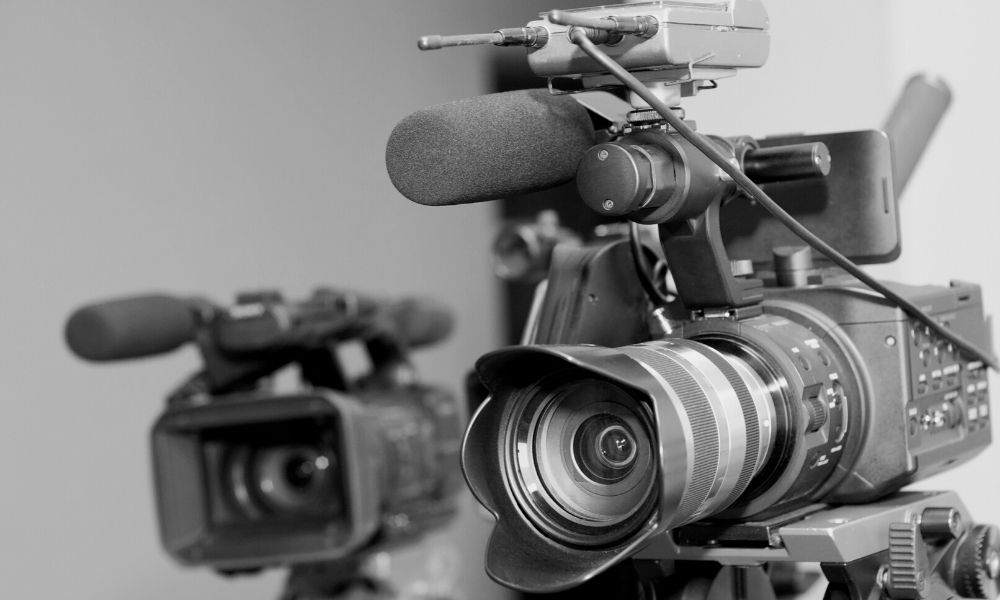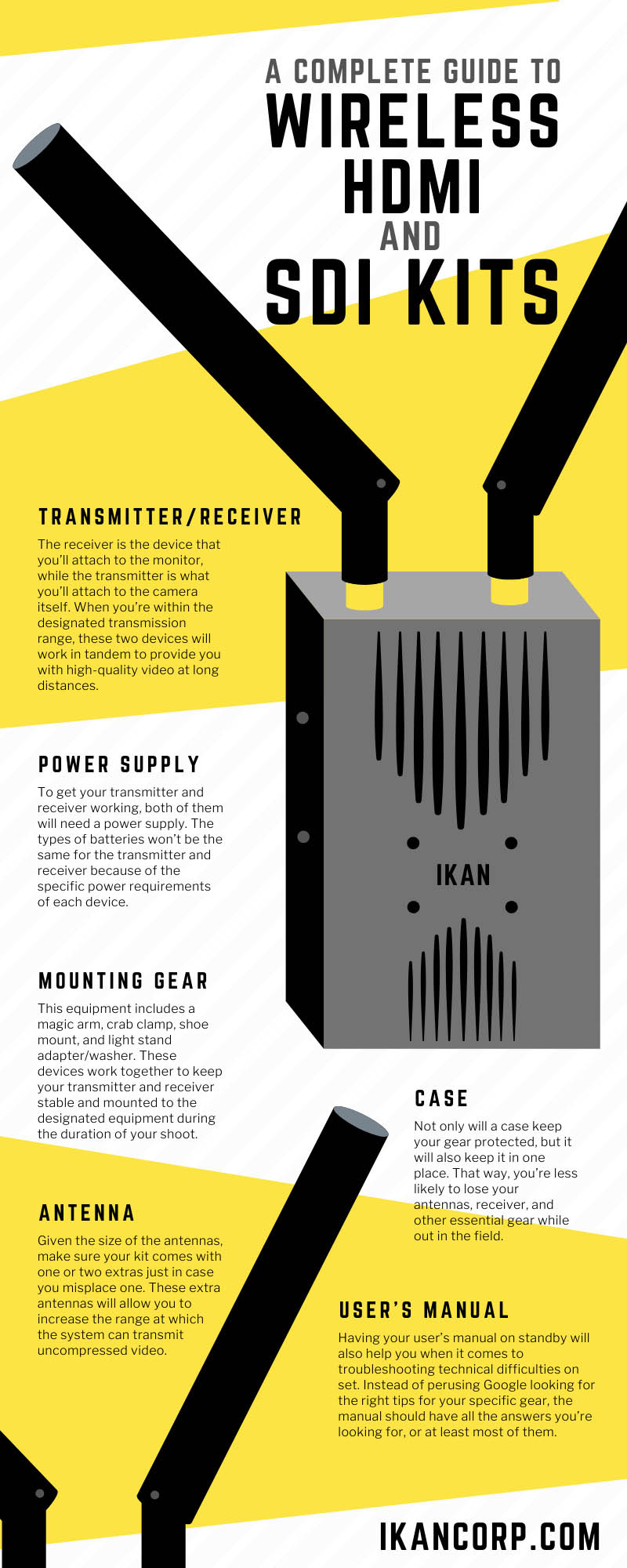
Using wireless HDMI/SDI transmitters and receivers is a comfortable, convenient way to transmit high-definition video from a camera to a monitor. If you have zero experience with these systems, you might worry at first about relying on the stability of the wireless connection. However, you shouldn’t because, with a quality system, you should experience no latency or dips in video quality as long as you adhere to the proper distances recommended by the manufacturer.
However, there’s more to wireless HDMI/SDI video than simply the transmitter and receiver. To help you find the right setup for your production, we’ve put together a complete guide to wireless HDMI and SDI kits. Without all of these components in one place, you’ll have to endure the hassle of buying all of them separately. Luckily, with the help of kits like our Blitz 3000, you won’t have to.
Transmitter/Receiver
The transmitter and receiver are the bread and butter of wireless HDMI and SDI kits. Buying a kit without these is like buying a car without wheels. The receiver is the device that you’ll attach to the monitor, while the transmitter is what you’ll attach to the camera itself. When you’re within the designated transmission range, these two devices will work in tandem to provide you with high-quality video at long distances. The transmitter and receiver won’t be able to do this, though, if they don’t have the proper power supply.
Power Supply
To get your transmitter and receiver working, both of them will need a power supply. The types of batteries won’t be the same for the transmitter and receiver because of the specific power requirements of each device. For instance, with our Blitz 3000 kit, the transmitter requires a Sony L Series-style battery, whereas the receiver instead requires a V-Mount battery. After getting the suitable batteries for each device, ensure your kit comes with proper battery-mounting equipment so you can easily slide the power supply into it and get to work.
Mounting Gear
Your wireless HDMI and SDI kit should also come with a few pieces of equipment that will help you mount the devices on both your camera and the monitor. This equipment includes a magic arm, crab clamp, shoe mount, and light stand adapter/washer. These devices work together to keep your transmitter and receiver stable and mounted to the designated equipment during the duration of your shoot.
Antenna
A quality HDMI/SDI kit is not complete without the inclusion of multiple antennas. These extra antennas will allow you to increase the range at which the system can transmit uncompressed video. Sometimes, you might not need them and be totally fine with the transmitter/receiver distance as is. However, some situations will call for a little extra distance, and luckily, a good antenna will do just that. Given the size of the antennas, make sure your kit comes with one or two extras just in case you misplace one. There are different styles of antennas, but we’ll get into those details later on.
Case
The only way you’ll be able to protect and transport all of this gear with ease is by ensuring your kit comes with a quality case. Just because some systems, like our Blitz 3000 Pro, are very durable pieces of machinery doesn’t mean you shouldn’t be careful with your gear. Not only will a case keep your gear protected, but it will also keep it in one place. That way, you’re less likely to lose your antennas, receiver, and other essential gear while out in the field.
User’s Manual
Not all HDMI/SDI wireless video transmitting and receiving systems are the same, which is why it’s so important to have that user’s manual for your specific kit with you in the field. This will help you get more familiar with the gear and understand when to use certain attachments, how to install the devices and their attachments, and additional advanced specifications regarding all the technical components of the system. Having your user’s manual on standby will also help you when it comes to troubleshooting technical difficulties on set. Instead of perusing Google looking for the right tips for your specific gear, the manual should have all the answers you’re looking for, or at least most of them.
What We Recommend
At Ikan, our Blitz 3000 3G-SDI/HDMI wireless video transmitter and receiver kit comes with the aforementioned gear, as well as a few more helpful attachments. For instance, this kit takes advantage of Ikan’s Quick Mount System, which makes mounting the devices quicker and easier. Another convenient feature is the LED signal connectivity indicators. If you’re unsure of exactly how far the transmitter is from the receiver, these LED lights on the side will let you know if you’re close enough to get the best video quality.
The farther you get from the device’s recommended range, the lower the connectivity strength will be. Aside from the single Blitz high-gain antenna and the five high-gain antenna extensions, the Blitz 3000 kit also comes with two mushroom antennas. The benefit of mushroom antennas is that they do more than just boost your signal. These antennas have the flexibility to bend in different directions to enhance that signal strength, which adds even more versatility to your shooting method on set.
With the help of a complete guide to wireless HDMI and SDI kits, you can ensure you have the right gear to utilize the convenience of these popular devices. Physical HDMI/SDI cables will get the job done but at the cost of freedom of movement in the field, which is a completely unnecessary restriction to place on yourself and the rest of the crew. Plus, between tripping and fraying risks, having too many cords can decrease the level of safety on your set. Those factors, on top of the inconvenience of replacing those cords if they break, make wired connections more trouble than they’re worth.
At Ikan, we can provide you with a high-quality form of wireless HDMI/SDI transmission with our Blitz 3000 kit. However, we also have a wide range of equipment to enhance the efficiency and quality of your next shoot, such as our camera cage rig.

